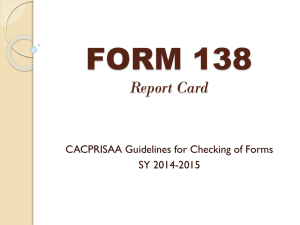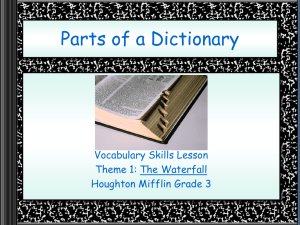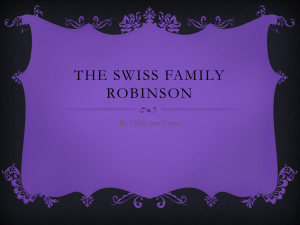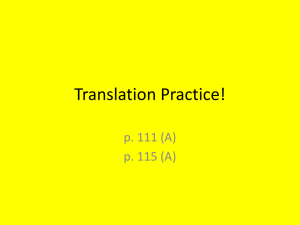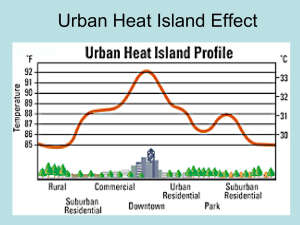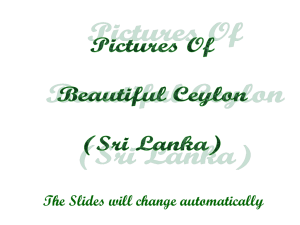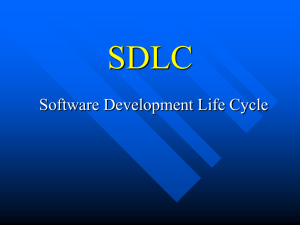ppt slides - User Modeling Inc.
advertisement
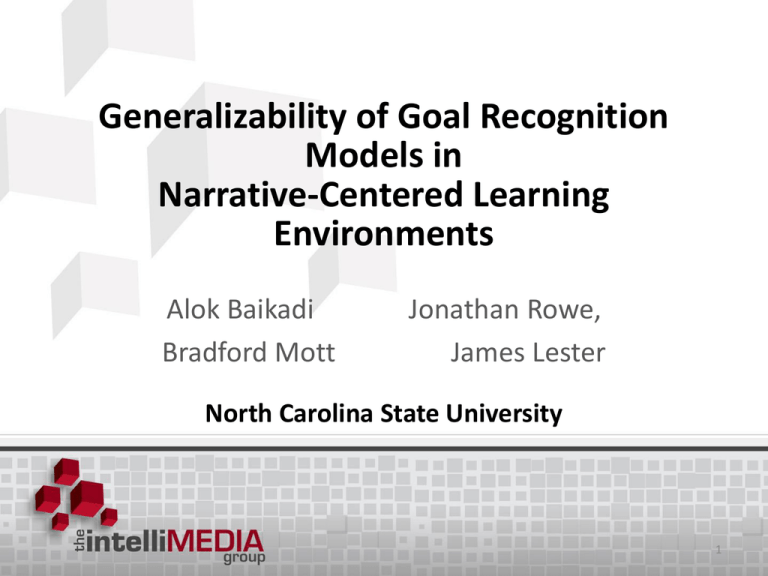
Generalizability of Goal Recognition Models in Narrative-Centered Learning Environments Alok Baikadi Bradford Mott Jonathan Rowe, James Lester North Carolina State University 1 Goal Recognition in Narrative-Centered Learning Environments Task: Identify the specific objective that the player is attempting to achieve Goal recognition models enable the following: • Preemptively augmenting narrative experiences • Assessing problem solving in narrative-centered learning environments • Iteratively refining learning environment 2 Generalization of Goal Recognition Goal Recognition is typically very domain dependent • Plan libraries • Many domain-independent techniques are only evaluated on one domain Research Question: Can a domain-specific goal recognition model be applied in a principled way to a new domain and achieve similar results? 3 Related Work Goal recognition is a restricted form of plan recognition (Carberry 2001; Kautz & Allen, 1986; Singla & Mooney, 2011) Investigated widely in numerous domains (Blaylock & Allen, 2003; Charniak & Goldman, 1993; Lesh, Rich & Sidner, 1999) IO-HMM approach for recognizing high-level goals in simple action-adventure game (Gold, 2010) PHATT-based approach for behavior recognition in real-time strategy game (Kabanza, Bellefeuille & Bisson, 2010) N-gram and Bayesian network approaches for goal recognition to support dynamic narrative planning (Mott, Lee & Lester, 2006) MLN-based approaches (Singla and Mooney, 2011 ; Ha et al., 2011 ; Sadilek and Kautz, 2012) 4 Outline Goal Recognition Approach Goal Recognition Corpora Evaluation & Discussion Conclusions and Future Work 5 Markov Logic Networks (MLNs) Statistical relational learning • Combines first-order relational reasoning with statistical learning • Input: A set of first-order predicate calculus formulae, along with weights • Formulae can be expanded into a Markov Random Field for learning and inference The joint probability distribution is defined as: 1 P(X = x) = Pk (F(xk )) Z Toolkit: Markov TheBeast (Riedel, 2008) 6 Representation Predicate Interpretation action(t, a) Action a happens at time t argument(t, a) Argument a observed at time t location(t, l) Player is at location l at time t state(t, s) The narrative is in state s at time t goal(t, g) Player is pursuing goal g at time t 7 Context in Goal Recognition Actions are not always independent Traditional goal recognition formulation allows for all previous observations • Can lead to sparsity issues Solution: Look for key events in the history that provide insight to the player’s context Use the structure of the narrative to provide the context 8 Discovery Events Task progress is represented by a sequence of discovery events Partial Answers to Central Questions are clues towards the solution Provides a context for goal recognition: What has the user discovered? 9 Discovery Event Formulae Milestone formulae recognize which discovery events have already occurred Uses a cardinality constraint to capture existence 10 Outline Goal Recognition Approach Goal Recognition Corpora Evaluation & Discussion Conclusions and Future Work 11 CRYSTAL ISLAND: OUTBREAK 8th grade microbiology Valve Software’s Source engine Science mystery Goal: Identify source and treatment of outbreak 12 CRYSTAL ISLAND: Introduction 1. Student plays the role of a new visitor to the island. 2. Student discovers that several team members have fallen sick. 13 CRYSTAL ISLAND: Gathering Information 3. Student gathers clues from sick team members. 4. Student asks the camp’s pathogen experts about microbiology concepts. 14 CRYSTAL ISLAND: Gathering Information 5. Student views microbiologythemed posters. 6. Student reads books about different types of pathogens. 15 CRYSTAL ISLAND: Hypothesis Testing 7. Student conducts tests using laboratory equipment. 8. Student interacts with the lab technician to view microscopic images of pathogens. 16 CRYSTAL ISLAND: Reporting Findings 9. Student presents findings and recommended treatment to camp nurse. 17 Corpus Collection Eighth grade class from public middle school 153 participants No prior experience with CRYSTAL ISLAND Played game for 1 hour, or until they were finished 7 goals available to students (Ha et al., 2011) 18 CRYSTAL ISLAND: UNCHARTED DISCOVERY Upper Elementary Science Subject 5th grade science Standards aligned Content Landforms Maps, models & navigation Story Adventurous adolescent Shipwrecked crew Complete quests to explore island 19 CRYSTAL ISLAND: UNCHARTED DISCOVERY Video Video 20 Corpus Collection Onsite at 8 schools 831 fifth grade students 62% Caucasian, 14% African American, 8% Asian, 16% Other Teacher-driven implementation in classrooms 6 one hour sessions over 4 weeks 12 goals available during the first 2 weeks 21 Goal Extraction Procedure Goal-achieving actions were identified Actions between previous goal and current goal were labeled with current goal Goal-achieving actions were removed 22 Outline Goal Recognition Approach Goal Recognition Corpora Evaluation & Discussion Conclusions and Future Work 23 Empirical Evaluation State of the Art Baseline: • Factored model (Ha et al., 2011) • Uses MLNs to relate the current time step to the previous time step Each model was evaluated using 10-fold student-level cross-validation Each model was evaluated according to three metrics: • Accuracy: Measured as F1 score • Convergence rate: Percent of sequences which eventually predicted the correct goal • Convergence point: In sequences that converged, the percent of actions that had to be observed before a consistent prediction was made 24 Baseline Model 25 CRYSTAL ISLAND: OUTBREAK Discovery Events Model 26 CRYSTAL ISLAND: UNCHARTED DISCOVERY Discovery Events 27 EXPERIMENTAL RESULTS Crystal Island: Outbreak Model F1 Convergence Rate Convergence Point Baseline 0.488 30.906 50.865 Discovery Events 0.546 50.056 35.862 Crystal Island: Uncharted Discovery Model F1 Convergence Rate Convergence Point Baseline 0.226 11.915 87.786 Discovery Events 0.244 29.973 79.350 28 Outline Goal Recognition Approach Goal Recognition Corpora Evaluation & Discussion Conclusions and Future Work 29 Conclusions Goal recognition models show considerable promise for enhancing the effectiveness of narrative-centered learning environments Encoding narrative discovery events in Markov Logic is a natural approach for representing context for student actions in goal recognition Experimental findings from two narrative-centered learning environments suggest that narrative discovery events enhance the accuracy and convergence of stateof-the-art MLN-based goal recognition models. 30 Future Work Investigate combinations of discovery events • Some of the milestones may have provided more information than others • Use automated feature selection Integrate goal recognition into a runtime environment • Can establish intuition for how accurate a model is necessary Elicit feedback from player • Assumes goals achieved are intended • May cause some bias 31 Collaborators Research Staff Eleni Lobene Rob Taylor Affiliated Faculty Carol Brown (East Carolina University) Roger Conner (East Carolina University) Patrick FitzGerald (Art + Design) Elizabeth Hodge (East Carolina University) James Minogue (Elementary Education) John Nietfeld (Educational Psychology) Marc Russo (Art + Design) Hiller Spires (Curriculum & Instruction) Eric Wiebe (STEM Education) Postdoc Eunyoung Ha Digital Art Staff Kirby Culbertson Sarah Hegler Karoon McDowell Graduate Students Julius Goth Joe Grafsgaard Eunyoung Ha Seung Lee Sam Leeman-Munk Wookhee Min Chris Mitchell Jennifer Sabourin Andy Smith Undergraduate Student Stephen Cossa Affiliated Post-Docs and Graduate Students (Art, Education, Psychology) Megan Hardy (Human Factors) Kristin Hoffman (Educational Psychology) Angela Meluso (Curriculum & Instruction) Lucy Shores (Educational Psychology) Sinky Zheng (Curriculum & Instruction) 32 Acknowledgments Support provided by the National Science Foundation under grant DRL-0822200. Additional support was provided by the Bill and Melinda Gates Foundation, the William and Flora Hewlett Foundation, EDUCAUSE, and the Social Sciences and Humanities Research Council of Canada. 33 34 Goal Recognition Example 35 Goal Recognition Example Crystal Island Virtual Environment Map Living Quarters Infirmary Waterfall Camp Entrance Bryce’s Quarters Dining Hall Waterfall: A nice place to cool off. Bryce’s Quarters: Living quarters for Bryce, lead scientist. Laboratory Laboratory: Research lab facilities Living Quarters: Living quarters for team members 36 Goal Recognition Example Crystal Island Virtual Environment Map Living Quarters Infirmary Waterfall Camp Entrance Bryce’s Quarters Dining Hall Waterfall: A nice place to cool off. Bryce’s Quarters: Living quarters for Bryce, lead scientist. Laboratory Laboratory: Research lab facilities Living Quarters: Living quarters for team members 37 Goal Recognition Example Crystal Island Virtual Environment Map Living Quarters Infirmary Waterfall Camp Entrance Bryce’s Quarters Dining Hall Waterfall: A nice place to cool off. Bryce’s Quarters: Living quarters for Bryce, lead scientist. Laboratory Laboratory: Research lab facilities Living Quarters: Living quarters for team members 38 Goal Recognition Example Crystal Island Virtual Environment Map Living Quarters Infirmary Waterfall Camp Entrance Bryce’s Quarters Dining Hall Waterfall: A nice place to cool off. Bryce’s Quarters: Living quarters for Bryce, lead scientist. Laboratory Laboratory: Research lab facilities Living Quarters: Living quarters for team members 39 Goal Recognition Example Crystal Island Virtual Environment Map Living Quarters Infirmary Waterfall Camp Entrance Bryce’s Quarters Dining Hall Waterfall: A nice place to cool off. Bryce’s Quarters: Living quarters for Bryce, lead scientist. Laboratory Laboratory: Research lab facilities Living Quarters: Living quarters for team members 40 Goal Recognition Example Crystal Island Virtual Environment Map Living Quarters Infirmary Waterfall Camp Entrance Bryce’s Quarters Dining Hall Waterfall: A nice place to cool off. Bryce’s Quarters: Living quarters for Bryce, lead scientist. Laboratory Laboratory: Research lab facilities Living Quarters: Living quarters for team members 41 Goal Recognition Example Crystal Island Virtual Environment Map Living Quarters Infirmary Waterfall Camp Entrance Bryce’s Quarters Dining Hall Waterfall: A nice place to cool off. Bryce’s Quarters: Living quarters for Bryce, lead scientist. Laboratory Laboratory: Research lab facilities Living Quarters: Living quarters for team members 42 Goal Recognition Example Crystal Island Virtual Environment Map Living Quarters Infirmary Waterfall Camp Entrance Bryce’s Quarters Dining Hall Waterfall: A nice place to cool off. Bryce’s Quarters: Living quarters for Bryce, lead scientist. Laboratory Laboratory: Research lab facilities Living Quarters: Living quarters for team members 43 Goal Recognition Example Crystal Island Virtual Environment Map Living Quarters Infirmary Waterfall Camp Entrance Bryce’s Quarters Dining Hall Waterfall: A nice place to cool off. Bryce’s Quarters: Living quarters for Bryce, lead scientist. Laboratory Laboratory: Research lab facilities Living Quarters: Living quarters for team members 44 Goal Recognition Example Crystal Island Virtual Environment Map Living Quarters Infirmary Waterfall Camp Entrance Bryce’s Quarters Dining Hall Waterfall: A nice place to cool off. Bryce’s Quarters: Living quarters for Bryce, lead scientist. Laboratory Laboratory: Research lab facilities Living Quarters: Living quarters for team members 45 Goal Recognition Example Crystal Island Virtual Environment Map Living Quarters Infirmary Waterfall Camp Entrance Bryce’s Quarters Dining Hall Waterfall: A nice place to cool off. Bryce’s Quarters: Living quarters for Bryce, lead scientist. Laboratory Laboratory: Research lab facilities Living Quarters: Living quarters for team members 46 Goal Recognition Example Crystal Island Virtual Environment Map Living Quarters Infirmary Waterfall Camp Entrance Bryce’s Quarters Dining Hall Waterfall: A nice place to cool off. Bryce’s Quarters: Living quarters for Bryce, lead scientist. Laboratory Laboratory: Research lab facilities Living Quarters: Living quarters for team members 47 Goal Recognition Example Crystal Island Virtual Environment Map Living Quarters Infirmary Waterfall Camp Entrance Bryce’s Quarters Dining Hall Waterfall: A nice place to cool off. Bryce’s Quarters: Living quarters for Bryce, lead scientist. Laboratory Laboratory: Research lab facilities Living Quarters: Living quarters for team members 48 Goal Recognition Example Crystal Island Virtual Environment Map Living Quarters Infirmary Waterfall What is the player’s current goal? Camp Entrance Bryce’s Quarters Dining Hall Waterfall: A nice place to cool off. Bryce’s Quarters: Living quarters for Bryce, lead scientist. Laboratory Laboratory: Research lab facilities Living Quarters: Living quarters for team members 49 Goal Recognition Example Crystal Island Virtual Environment Map Living Quarters Infirmary Waterfall Camp Entrance Bryce’s Quarters Dining Hall Waterfall: A nice place to cool off. Bryce’s Quarters: Living quarters for Bryce, lead scientist. Laboratory Laboratory: Research lab facilities Living Quarters: Living quarters for team members 50
